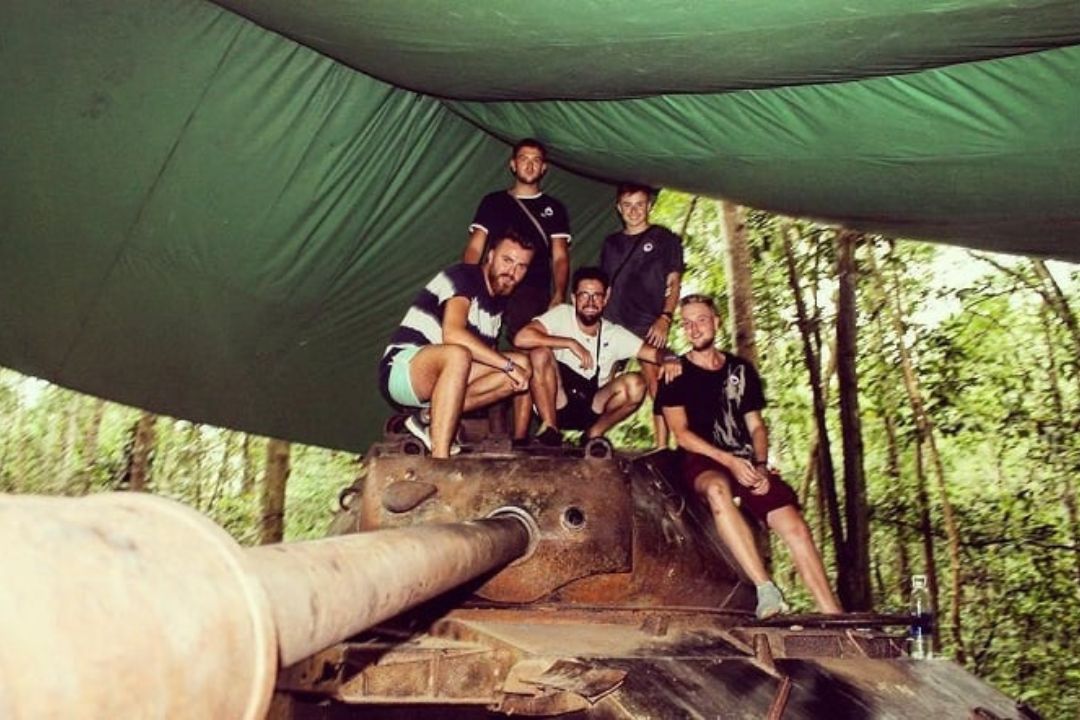Cu Chi Tunnels exploration is a journey into the “underground maze,” one of the nationally recognized historical sites in Saigon. This location offers a captivating experience in your travel journey through the city named after Uncle Ho.
Cu Chi Tunnels tourism is flourishing, not just for its historical and cultural significance but also as an attractive tourist destination linked to famous military structures in Vietnam. Exploring the Cu Chi Tunnels will provide you and your family with an enriching and meaningful trip.
1/ Learn About Cu Chi Tunnels:
Cu Chi Tunnels is one of the well-known tourist destinations in Cu Chi, attracting many visitors when exploring this region. The tunnel complex is located on Provincial Road 15, Phu Hiep Hamlet, Phu My Hung Commune, Cu Chi District, Ho Chi Minh City.
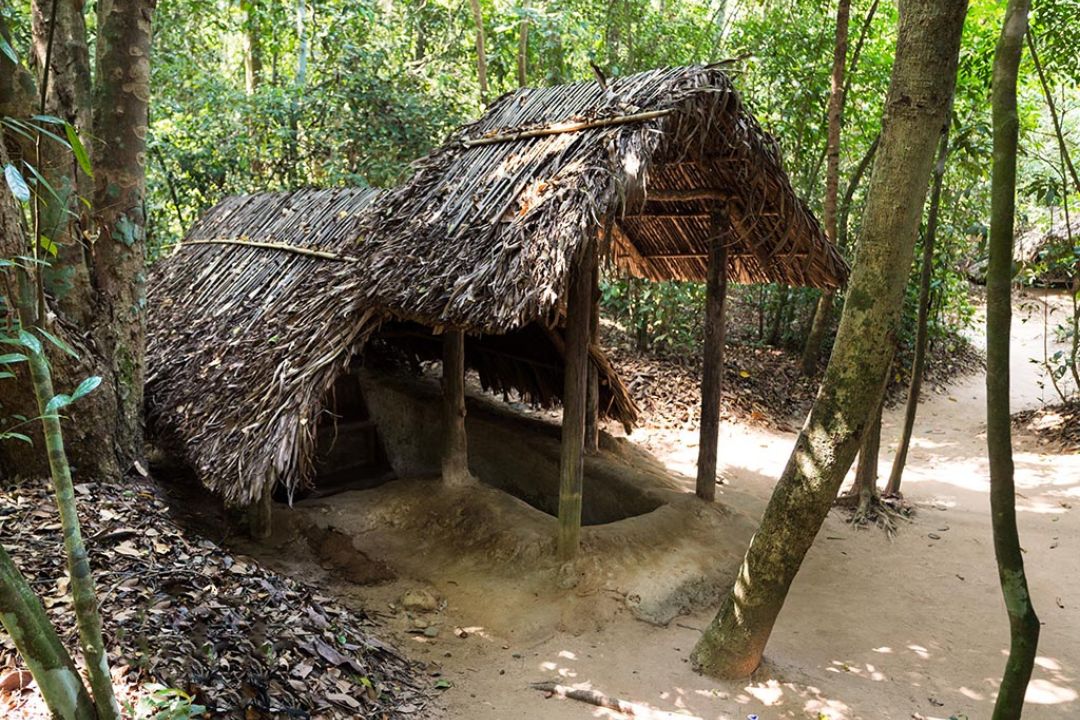
To travel to Cu Chi Tunnels, visitors need to cover approximately 70km from the center of Ho Chi Minh City. With a not too distant location, you can choose from various transportation options for your journey.
This tourist site has a total length of up to 250km, with three different depth levels. The top level is approximately 3m below the ground, the middle level is 6m, and the deepest level is about 12m. This is one of the six famous artificial structures globally. Additionally, the Cu Chi Tunnels tourist area is among the top 7 most unusual destinations in Southeast Asia.
2/ History of Cu Chi Tunnels Formation:
Cu Chi Tunnels have long been one of the most interesting spots in Saigon; however, not everyone may be familiar with the history of its formation.
The history of Cu Chi Tunnels is closely tied to the resistance war against the French during the period from 1946 to 1948. The construction was carried out by the forces and residents of Tan Phu Trung and Phuoc Vinh An communes to hide and store weapons and military supplies.
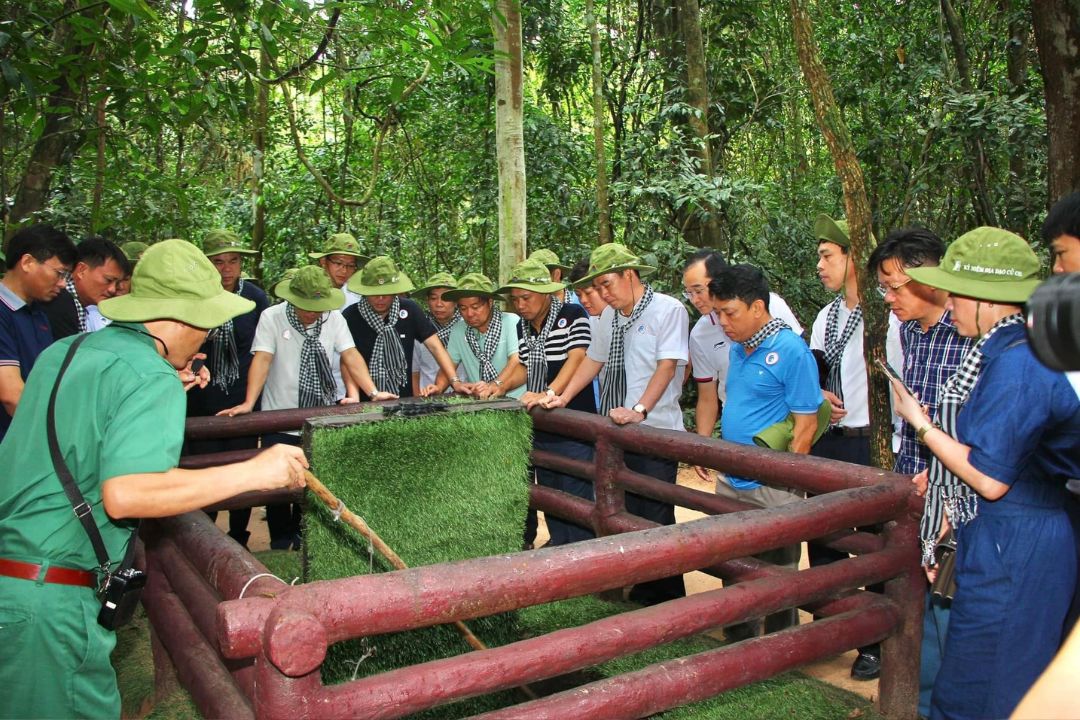
Initially, each village here had its own base tunnel. However, due to the need for movement, they connected with each other, forming an interconnected system. The Cu Chi Tunnels complex now connects six communes to the north of Cu Chi Tunnels. From this structure, military forces could easily communicate, conceal their troops, and discuss revolutionary plans.
From 1961 to 1965, the tunnels expanded into various interconnected branches. The upper part of this structure is equipped with numerous trapdoors, bell pits, minefields, serving the fighting of our military and people.
3/ How to Get to Cu Chi Tunnels?
Cu Chi Tunnels are about 70km northwest of Ho Chi Minh City. To visit Cu Chi Tunnels, you can choose from various means of transportation, such as:
- Motorcycle, self-driving car: From the center of Ho Chi Minh City, you can take the route from Ben Thanh Market through Cach Mang Thang 8 Street, then continue on Truong Chinh Street, An Suong Bridge, National Highway 22, Ba Trieu Street, Trung Nu Vuong Street, and so on. Afterward, proceed straight to pass through Hoc Mon Town, cross Sang Bridge, go through Tan Quy intersection, Ben Nhay Bridge, and reach Phu Hoa Dong Market, where the historical site of Cu Chi Tunnels is located.
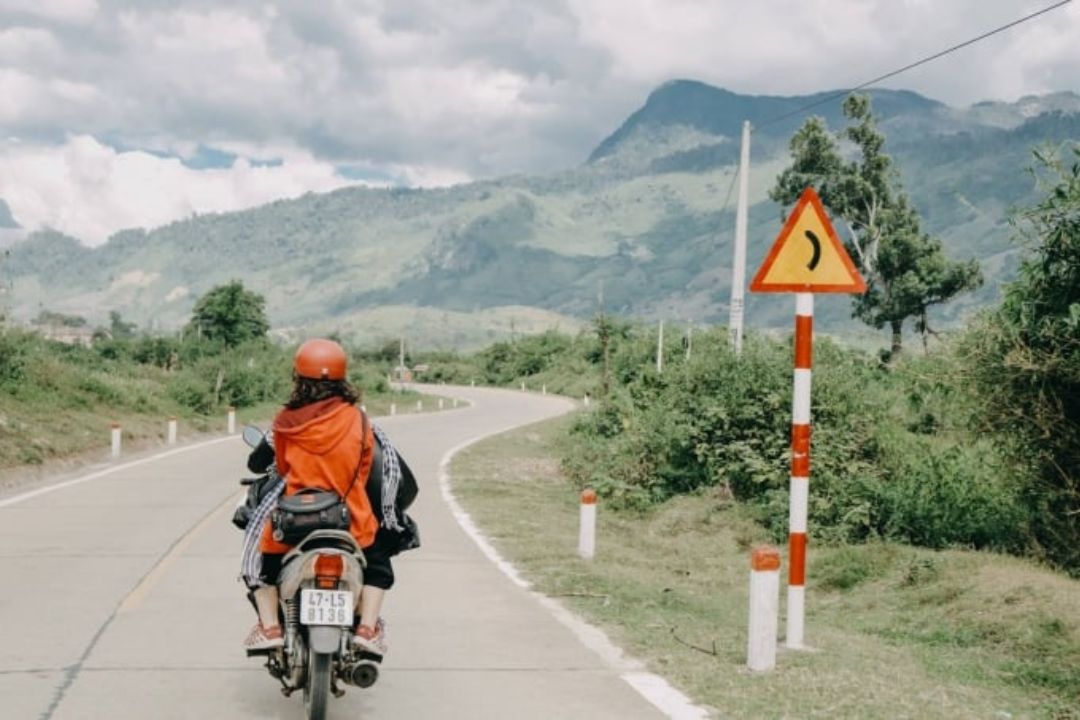
- Taxi: If you have a lot of luggage and want a comfortable and convenient trip, a taxi might be the most suitable means of transportation. However, you need to consider carefully as the 70km journey from the city center can cost around 500,000 – 600,000 VND one way.
- Bus: If you have more time in your itinerary and want to save costs, the bus is considered a suitable option. Travelers can go to Ben Thanh Market, take bus route 13 to Cu Chi Bus Station, then continue with bus 79 to Cu Chi Tunnels. The bus travel time is about 2.5 hours, so it’s a good choice if you have enough time.
- Canoe, boat: This will undoubtedly be the most unique means of transportation to explore Cu Chi Tunnels. In addition, this mode of transportation allows tourists to comfortably enjoy the scenery on both sides of the river and check-in on the boat.
For the most convenient Cu Chi Tunnels tour, tourists should choose hotels with convenient locations. Based on the experience of traveling to Cu Chi Tunnels, many tourists prefer to choose hotels near the city center for easy access to various other tourist destinations.
4/ Explore the Cu Chi Tunnels Site in Detail:
4.1. Visit the Cu Chi Tunnels:
Cu Chi Tunnels tourism will be incomplete without exploring the deep tunnels underground. Visitors can admire the tunnel passages – the places where our military and people operated during the war. The 120m-long tunnel with two levels will provide you with many interesting experiences.
Additionally, here you can enjoy local-flavored dishes such as sweet potatoes, cassava, and taro dipped in sesame salt.
4.2. Explore the War Zone at the Cu Chi Tunnels Tourist Area:
As one of the famous historical landmarks, the significance of Cu Chi Tunnels is also associated with history and war. When visiting this location, you should experience exploring the war zone.
Here, you will watch slow-motion films depicting the entire life and combat activities of our military and people living in this area. Furthermore, you can admire many models of famous Vietnamese historical sites reproduced at this tourist destination, such as Long Bien Bridge, One Pillar Pagoda, Nha Rong Wharf, and Saigon Bridge.
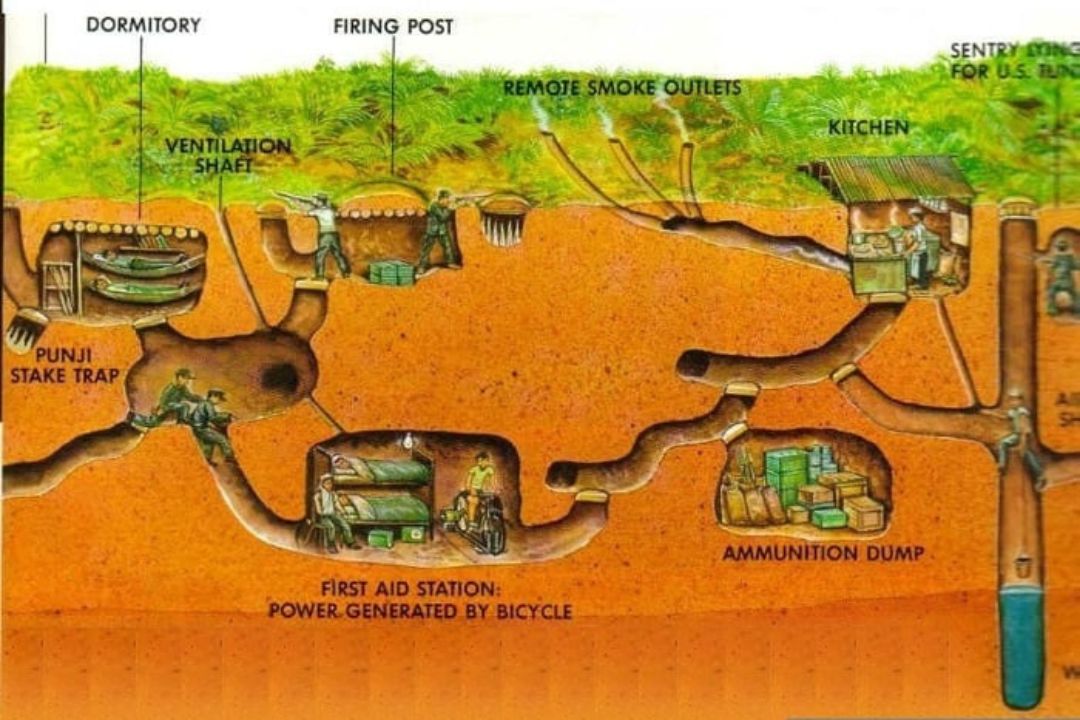
4.3. Try Shooting in the Cu Chi Tunnels’ Shooting Range:
Tourists visiting Cu Chi Tunnels also find it exciting to participate in activities like disassembling guns and trying their hand at shooting. You will be enthusiastically instructed by the staff of this tourist area. Typically, this location attracts a large number of foreign tourists.
The price of Cu Chi Tunnels admission for this activity is 50,000 VND per person for 60 minutes.
4.4. Visit the Simulated South China Sea Bathing Area:
Cu Chi Tunnels are also known as a famous tourist destination with various activities. After exploring the tunnels and military activities, visitors can immerse themselves in the clear water at the simulated South China Sea bathing area. The price for experiencing this activity is 20,000 VND per person.
4.5. Enjoy Trung An Fruit Garden in the Cu Chi Tunnels Historical Site:
At this tourist destination, visitors are delighted to explore various orchards and enjoy many delicious fruits. Trung An Fruit Garden is famous here, and visitors can pick and taste a variety of fruits right in the garden, such as rambutan, mango, jackfruit, and durian.
4.6. Visit the Wild Animal Rescue Station:
The Cu Chi Tunnels map will guide you to visit the wild animal rescue station, which is about 1km from the central tourist area, located between Duoc Wharf and Dinh Wharf. This is considered the largest rescue station in the Southern region with over 3,600 rare animal species. Tourists visiting this tourist destination can enjoy playing with animals and hear stories told by the staff about the animals here.
5/ Things to Know When Visiting Cu Chi Tunnels:
5.1. Ticket Prices and Opening Hours for Cu Chi Tunnels:
When traveling to Cu Chi Tunnels, visitors should note the opening hours: 7:00 AM – 5:00 PM daily. Therefore, you should balance your schedule to have a convenient and complete exploration of this tourist destination.
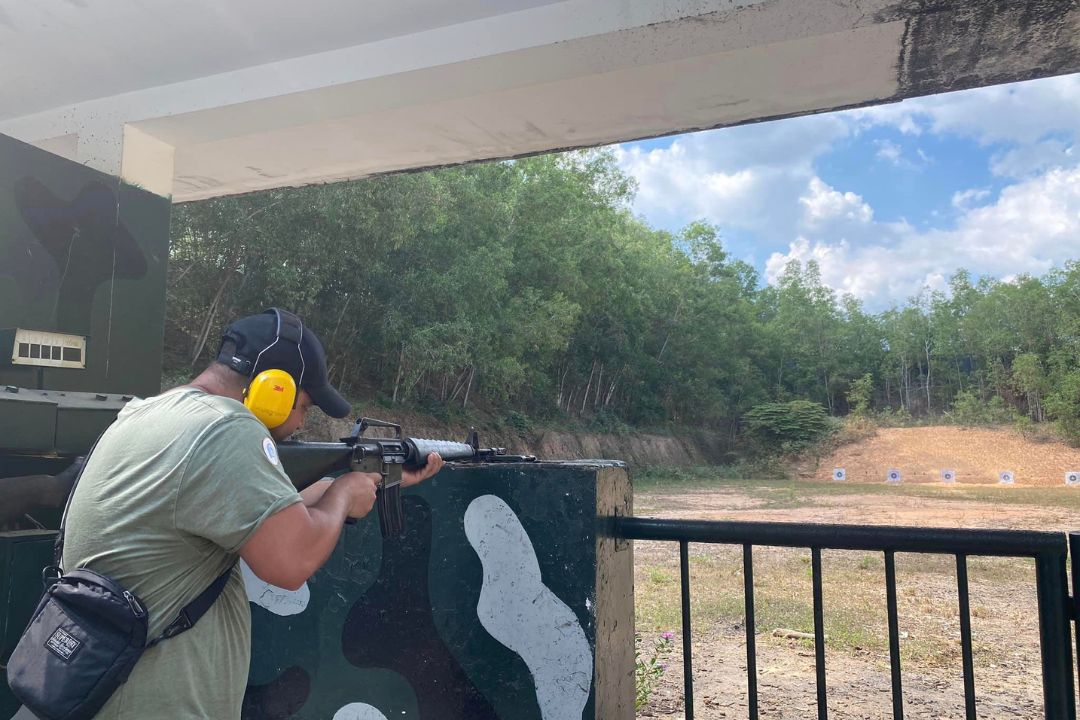
In addition, the ticket prices for Cu Chi Tunnels tourist area range from 20,000 to 30,000 VND per person, 20,000 VND per person for tunnel crawling, and 50,000 VND per person for various games. These prices are clearly specified by the site management, and there are no additional fees, so you can plan your budget in advance.
5.2. Notes When Visiting Cu Chi Tunnels:
To have the most convenient and complete Cu Chi Tunnels tour, tourists can read more about the following notes and small tips:
-
- This tourist site does not have specific dress code requirements. However, as visitors will crawl into tunnels to explore, it is advisable to choose neat, dark-colored clothing for easy movement and to avoid getting dirty.
- Comfortable sports shoes are recommended for easier movement.
- Tourists should choose sunscreen and insect repellent to accompany their journey.
- For those who are afraid of tight spaces or have low blood pressure, it is not advisable to enter small tunnels.
This comprehensive guide aims to assist travelers in planning and enjoying their visit to the Cu Chi Tunnels, a site rich in history, culture, and adventure.
